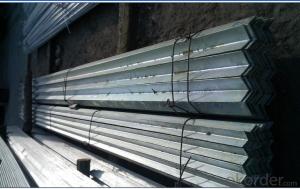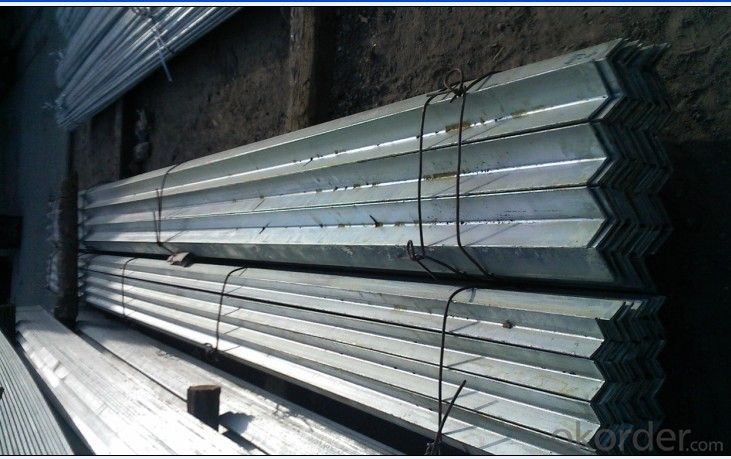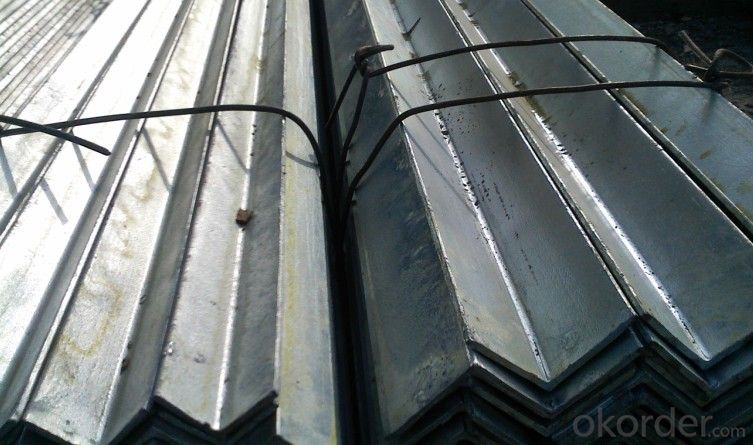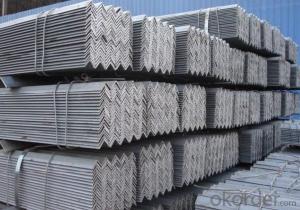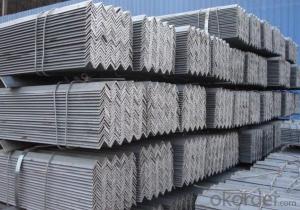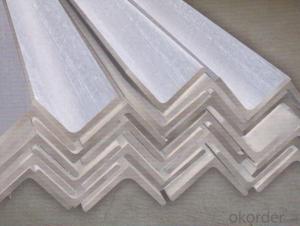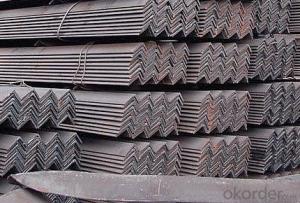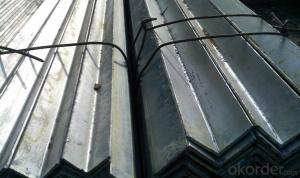Angle Steel with High Quality for Construction
- Loading Port:
- Tianjin
- Payment Terms:
- TT OR LC
- Min Order Qty:
- 25 m.t.
- Supply Capability:
- 20000 m.t./month
OKorder Service Pledge
OKorder Financial Service
You Might Also Like
Specification
Product Description:
OKorder is offering Angle Steel with High Quality for Construction at great prices with worldwide shipping. Our supplier is a world-class manufacturer of steel, with our products utilized the world over. OKorder annually supplies products to European, North American and Asian markets. We provide quotations within 24 hours of receiving an inquiry and guarantee competitive prices.
Product Applications:
Angle Steel with High Quality for Construction are ideal for structural applications and are widely used in the construction of buildings and bridges, and the manufacturing, petrochemical, and transportation industries.
Product Advantages:
OKorder's Angle Steel with High Quality for Construction are durable, strong, and resist corrosion.
Main Product Features:
· Premium quality
· Prompt delivery & seaworthy packing (30 days after receiving deposit)
· Corrosion resistance
· Can be recycled and reused
· Mill test certification
· Professional Service
· Competitive pricing
Packaging & Delivery of Angle Steel with High Quality for Construction:
Packaging Detail: products are packed in bundle and then shipped by container or bulk vessel, deformed bar is usually naked strapping delivery, when storing, please pay attention to moisture proof. The performance of rust will produce adverse effect.
Each bundle weight: 2-3MT, or as required
Payment term: TT or L/C
Delivery Detail: within 45 days after received advanced payment or LC.
Label: to be specified by customer, generally, each bundle has 1-2 labels
Trade terms: FOB, CFR, CIF
Images:
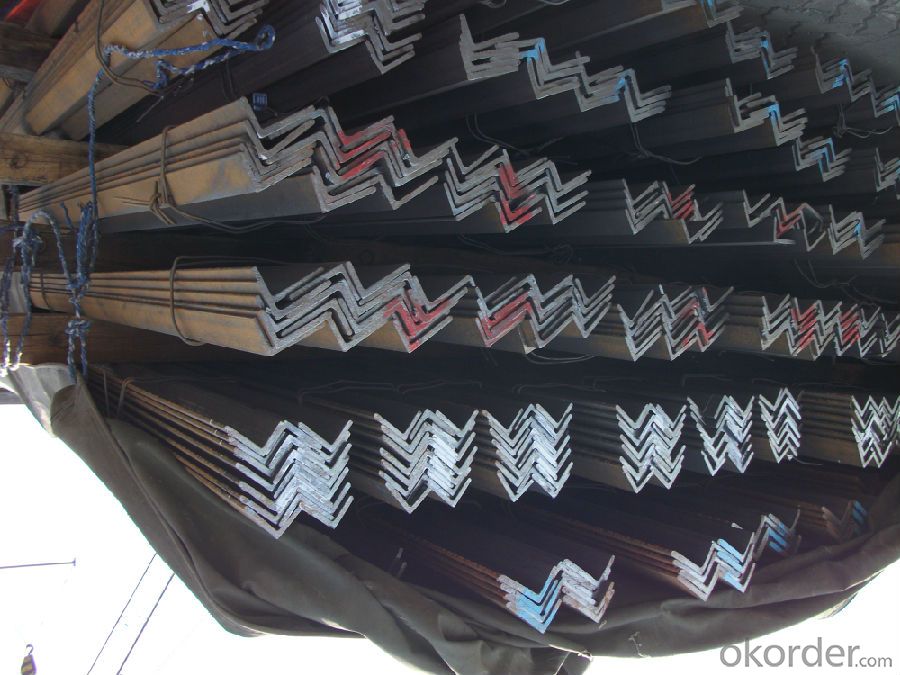
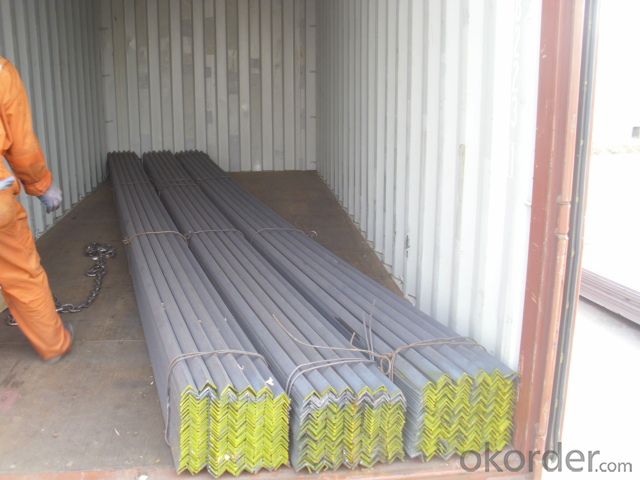
- Q: Can steel angles be used in the construction of agricultural buildings?
- Yes, steel angles can be used in the construction of agricultural buildings. Steel angles are commonly used as structural components for framing, bracing, and supporting various elements in agricultural buildings such as walls, roofs, and machinery. They provide strength, stability, and durability, making them suitable for withstanding the load and environmental conditions typically encountered in agricultural settings.
- Q: Are steel angles load-rated?
- Indeed, load-rating is applicable to steel angles. Steel angles serve as structural components widely employed in construction and engineering endeavors. They possess the ability to endure diverse forms of loads, encompassing axial, bending, and shear loads. The load rating of a steel angle pertains to its utmost capacity to sustain a designated load quantity without experiencing any form of failure. Thorough testing and analysis are conducted to ascertain the load ratings for steel angles, taking into account variables such as material properties, geometry, and design criteria. Typically, manufacturers furnish load ratings, which engineers utilize to guarantee the structural soundness and security of a project.
- Q: What are the different methods of fire protection for steel angles?
- Depending on specific requirements and regulations, there exist several methods for fire protection of steel angles. Some commonly used methods include: 1. Passive Fire Protection: Fire-resistant materials, such as fire-resistant coatings, fireproofing sprays, or intumescent paints, are directly applied to the steel angles. These coatings serve to delay fire spread and provide insulation, safeguarding the steel angles from high temperatures during a fire. 2. Encasement: Steel angles can be enclosed in fire-resistant materials like concrete or gypsum board. This creates a barrier that prevents the fire from reaching temperatures that could result in structural failure. 3. Fireproofing Systems: Fire-resistant boards or panels are affixed to the steel angles, forming fireproofing systems. These systems offer insulation and protection against fire, slowing down the heating process and maintaining the structural integrity of the steel angles for an extended period. 4. Sprinkler Systems: The installation of sprinkler systems is also an effective fire protection measure for steel angles. These systems are designed to detect and suppress fires by releasing water or fire-suppressing agents upon activation. By swiftly extinguishing the fire, sprinklers can prevent the steel angles from reaching critical temperatures. 5. Fire-resistant barriers: Fire-resistant walls or curtains can be employed as barriers to separate steel angles from potential fire sources. These barriers aid in containing the fire and preventing its spread to the steel angles, providing an additional layer of protection. To determine the most suitable method of fire protection for steel angles in a specific setting, it is crucial to consult fire protection experts, engineers, and local building codes. Factors such as building type, fire safety requirements, and the level of fire risk involved may influence the choice of method.
- Q: Can steel angles be used for soundproofing applications?
- Steel angles are not typically used for soundproofing applications. Soundproofing materials are chosen based on their ability to absorb, dampen, or block sound waves. Steel angles, being a rigid and reflective material, do not possess these sound-dampening qualities. Instead, materials such as acoustic foam, mass-loaded vinyl, or soundproof drywall are commonly used for soundproofing purposes. These materials are specifically designed to absorb or block sound waves, helping to reduce noise transmission between spaces. Therefore, while steel angles may have various applications in construction and engineering, they are not suitable for soundproofing purposes.
- Q: What is the typical thickness of a steel angle?
- The typical thickness of a steel angle can vary depending on the specific application and the required strength. However, in general, steel angles are available in a range of thicknesses starting from 1/8 inch (3.18 mm) and can go up to 3/4 inch (19.05 mm) or even thicker. The chosen thickness will ultimately depend on factors such as the load-bearing requirements, structural design, and the desired level of durability.
- Q: What are the different types of corrosion protection coatings for steel angles?
- There are several types of corrosion protection coatings available for steel angles, each designed to provide varying levels of protection against corrosion. 1. Paint Coatings: One of the most common types of corrosion protection coatings for steel angles is paint. Paint coatings act as a barrier between the steel surface and the corrosive elements in the environment. They are usually applied in multiple layers and can be customized to meet specific requirements, such as resistance to chemicals or UV radiation. 2. Galvanizing: Galvanizing is another widely used corrosion protection method for steel angles. It involves applying a layer of zinc to the steel surface through a process called hot-dip galvanizing. This coating provides excellent protection against corrosion as the zinc layer acts as a sacrificial anode, corroding before the steel does. Galvanized steel angles are commonly used in outdoor applications where they may be exposed to moisture and harsh weather conditions. 3. Powder Coatings: Powder coatings are a type of protective coating that is applied as a dry powder and then cured using heat. They provide a durable and corrosion-resistant finish to steel angles. Powder coatings can be customized in terms of color, texture, and thickness, offering both aesthetic appeal and enhanced protection against corrosion. 4. Epoxy Coatings: Epoxy coatings are often used for industrial applications where steel angles may be exposed to harsh chemicals or abrasive environments. These coatings form a strong, protective layer that resists corrosion, as well as chemicals, solvents, and abrasion. Epoxy coatings can be applied as a single layer or in combination with other coatings for added protection. 5. Organic Coatings: Organic coatings, such as polyurethane or acrylic coatings, are commonly used in architectural applications where steel angles require protection from corrosion while maintaining an aesthetically pleasing appearance. These coatings provide good resistance to weathering, UV radiation, and corrosion, ensuring the longevity of the steel angles. It is important to consider the specific application, environmental conditions, and budget constraints when selecting a corrosion protection coating for steel angles. Consulting with a corrosion specialist or coating supplier can help determine the most suitable coating for the intended use.
- Q: How do you calculate the compression strength of a steel angle?
- In order to calculate the compression strength of a steel angle, one must take into account both its geometric properties and the material properties of the steel. First and foremost, it is necessary to determine the cross-sectional area of the steel angle. This can be accomplished by multiplying the angle's thickness by the flange's width and then subtracting the area of any holes or cutouts present in the angle. Following this, it is imperative to ascertain the yield strength of the steel. The yield strength denotes the maximum stress that the steel can endure before undergoing permanent deformation. This information is usually obtainable from either the steel manufacturer or reference materials. Once the cross-sectional area and the yield strength have been determined, the compression strength can be calculated using the following formula: Compression strength = Yield strength * Cross-sectional area It is important to bear in mind that this calculation assumes that the steel angle is solely subjected to a compressive load, devoid of any bending or torsional forces. If the angle is exposed to other types of loading, such as bending or torsion, additional calculations or testing may be necessary in order to accurately ascertain its strength.
- Q: What is the typical size range for steel angles?
- The typical size range for steel angles can vary depending on the specific application and industry. However, in general, steel angles are available in a range of sizes that typically fall within the dimensions of 20-200 millimeters (mm) in width and 3-20 mm in thickness. The length of steel angles can vary as well, typically ranging from 3 to 12 meters. These dimensions allow for a versatile range of applications, including structural support in construction, manufacturing of machinery and equipment, and various architectural uses. It's important to note that these size ranges are common, but there may be variations and custom sizes available depending on the specific requirements of a project.
- Q: Are steel angles suitable for agricultural applications?
- Indeed, steel angles prove to be apt for agricultural applications. These multifunctional and long-lasting steel angles are well-suited for a range of agricultural needs. They can be employed to fashion robust frameworks for greenhouses, barns, and storage structures. By delivering exceptional structural reinforcement and enduring the weight of hefty burdens, steel angles are well-matched for erecting sturdy barriers, gates, and enclosures for livestock. Moreover, as steel angles are resistant to corrosion, they prove indispensable in agricultural settings that frequently encounter dampness and chemicals. The reliability of steel angles, owing to their adaptability and durability, renders them an optimal choice for agricultural purposes.
- Q: Can steel angles be used in architectural sculptures and installations?
- Architectural sculptures and installations can indeed incorporate steel angles. These angles possess remarkable versatility and are frequently employed in construction due to their robustness and endurance. They can be effortlessly welded, bolted, or affixed using alternative methods, thereby rendering them ideal for the creation of intricate and elaborate structures. Steel angles can be molded and shaped into a myriad of angles and curves, thereby facilitating the realization of imaginative and distinctive designs in architectural sculptures and installations. Moreover, steel angles can be adorned with diverse coatings or paints to heighten their visual allure and safeguard them against corrosion, rendering them an appropriate choice for both indoor and outdoor installations. In conclusion, steel angles provide the essential strength, flexibility, and potential for aesthetic innovation that architectural sculptures and installations require.
Send your message to us
Angle Steel with High Quality for Construction
- Loading Port:
- Tianjin
- Payment Terms:
- TT OR LC
- Min Order Qty:
- 25 m.t.
- Supply Capability:
- 20000 m.t./month
OKorder Service Pledge
OKorder Financial Service
Similar products
Hot products
Hot Searches
Related keywords
